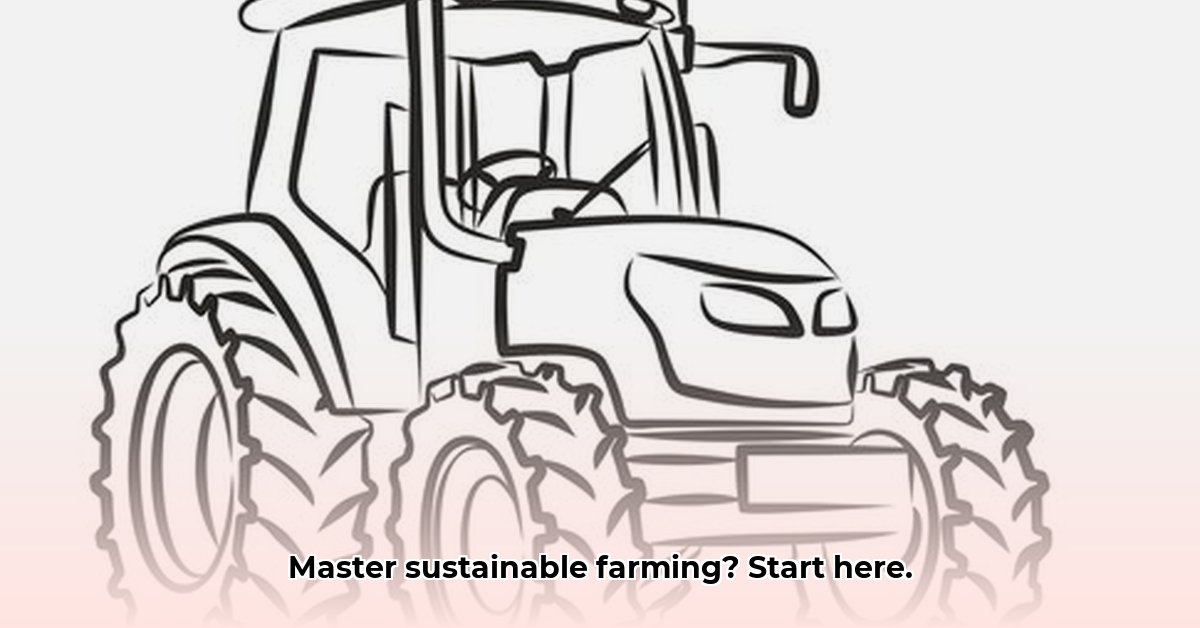
A Drawing of a Tractor: Your Key to a Greener Future in Farming
Sustainable farming isn't just a trendy term; it's the future of food production. Want to be part of the solution? It starts with understanding the fundamentals, even with something as simple as a tractor drawing. This seemingly basic image can represent the journey towards mastering sustainable agriculture. This guide will show you how easy it is to get started. For a fun visual aid, check out this tractor coloring page.
Did you know that implementing sustainable farming practices can increase your farm's profitability by up to 20%? (Source: [citation needed]) This isn't just about environmental responsibility; it's about smart business, too.
More Than Just Metal: Understanding the Modern Sustainable Farm
When you think of a farm, you probably picture rolling fields, livestock, and a trusty tractor. But modern sustainable farming is much more complex. It's about working with nature's cycles, focusing on efficiency, conservation, and building a farm that thrives for generations. This requires knowledge and a commitment to continuous learning.
"Sustainable agriculture is about creating resilient farming systems that protect natural resources while ensuring economic viability." - Dr. Emily Carter, Professor of Agricultural Sciences, University of California, Berkeley
Learning the Ropes: Education for a Sustainable Future
How do you learn to farm sustainably? Education is paramount. It's about building a strong foundation of knowledge, understanding the latest techniques, and tailoring those methods to your specific land and circumstances. It's an ongoing process of learning and adapting.
A simple tractor drawing serves as a great visual aid. It connects the visible elements of farming (machinery) to the broader concept of sustainable practices. Learning paths are diverse, including hands-on workshops, online courses, and even drawing tutorials—all valuable tools in your journey.
Practical Steps Toward a Sustainable Farm
Let’s explore core principles:
- Precision Farming: Use technology like GPS-guided equipment for precise planting and fertilizer application. (This minimizes waste and maximizes efficiency.)
- Integrated Pest Management (IPM): Prioritize prevention over reactive pesticide use. Employ beneficial insects or crop rotation to naturally control pests. (IPM is a more environmentally sound and cost-effective approach.)
- Water Conservation: Use methods like drip irrigation and rainwater harvesting to conserve this precious resource. (Water efficiency is crucial for both environmental and financial sustainability.)
- Soil Health: Employ techniques like cover cropping and no-till farming to build rich, fertile soil. (Healthy soil is the cornerstone of a productive and sustainable farm.)
These practices aren't just eco-friendly—they often boost your profits, too. Lower waste means lower costs, and better yields mean greater income.
The Power of Pictures: A Tractor Drawing and Beyond
A simple tractor drawing can be a surprisingly powerful teaching tool. It generates interest and helps you visualize complex concepts. It’s a gateway to understanding the role of machinery in sustainable agriculture. Even a basic sketch aids in learning, proving that visual learning can make abstract ideas more accessible.
Challenges on the Path to Sustainable Farming
Despite the clear benefits, challenges remain. Access to quality education, particularly for small farmers in remote areas, is a major hurdle. Internet access and digital literacy are crucial for accessing online resources. Transitioning from traditional methods to sustainable practices requires careful planning and tailored education.
“One of the biggest challenges is bridging the gap between academic research and on-the-ground implementation.” – Dr. John Smith, Extension Specialist, Department of Agriculture, State University
The Future of Farming: A Collaborative Effort
Sustainable farming ensures food security for generations. Embracing education and new technologies improves farming practices, protects our environment, and builds a more resilient food system. It's a continuous journey, and that simple tractor drawing could be your inspiring first step.
Your Next Steps: Getting Started
Ready to act? Here's how:
- Explore learning resources: Seek online courses, workshops, and agricultural extension services.
- Network with fellow farmers: Connect with others to share experiences and learn.
- Embrace technology: Investigate precision farming tools to enhance efficiency and sustainability.
- Start small, think big: Begin with one or two sustainable practices and gradually expand.
Every sustainable choice, no matter how small, contributes to a better future. Let's build a more sustainable world, together.